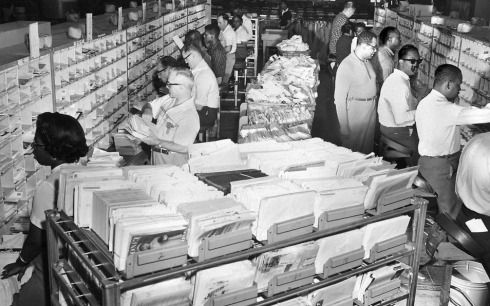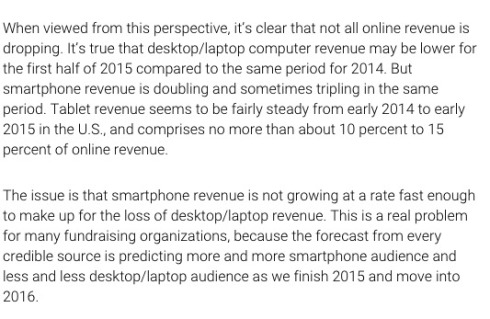A couple weeks ago one of our excellent customers (they’re all EXCELLENT! in our eyes) used their RAZ Mobile account at a fundraising event they held. As I have written on our blog before, RAZ Mobile is an excellent way to avoid passing out paper forms for credit card donations. Our customer simply asked the attendees to take out their phone and make a donation via the customer’s fully-optimized RAZ Mobile donation page. Their results are very impressive and as the title suggests, none of what they achieved could be done with text message giving using a keyword texted to a short code.
First, the results: our customer raised $8,425 in 22 minutes from 77 donors.
No matter the size of your nonprofit this is impressive.
Better still was the fact that none of these credit card donations involved highly personal and confidential information being entered onto a paper form and then being handed to a stranger who then gives it to another stranger to key all this data in BY HAND!
(Perhaps you’d be willing at this point to take a pledge to cease using paper forms for credit card donations. It’s a security risk, plain and simple.)
Second, I said this can’t be done with text-to-give. While technically it can be done, there’s 2 MAJOR THINGS our customer achieved which CANNOT be done with text-to-give fundraising, (e.g. texting a keyword to a shortcode and having the donation appear on the donor’s phone bill.)
To repeat the past musings herein about this type of fundraising, even millennials have said that they don’t prefer this type of giving by text. They do, however, prefer being unlimited in the size of their gift (YEAH!) and they don’t want a donation added to their phone bill.
The first major thing our customer achieved was an average gift of over $109. Text-to-give is limited to a measly $10. Why take $10 when a lot more is out there to be had like our customer saw at their event.
The second major achievement, and I were I at a nonprofit I would consider this to be huge: 100 percent of our customer’s donations went to them directly and immediately as soon as they cleared the donor’s credit card.
With text-to-give you’re going to wait 60-120 days for the funds. Why?
If millennials don’t want text-to-give and there are results to be had like our customer saw why on earth would your nonprofit consider text-to-give to be a “solution”???
I suppose you could try to raise money that way but as we’ve stated here, there’s 2 MAJOR things you’ll never, ever be able to with text-to-give but that you can do easily with RAZ Mobile.
Dale Knoop leads a great team working to make RAZ Mobile a powerful, international platform for any cause engaged in fundraising. Today, all causes globally need a content-rich mobile presence that can be shared through social media, email and other popular digital channels and best of all-quickly and securely process 100% of donations from motivated supporters with a minimum of friction in seconds with no passwords. Dale holds multiple patents and applications for patent in the mobile space.














